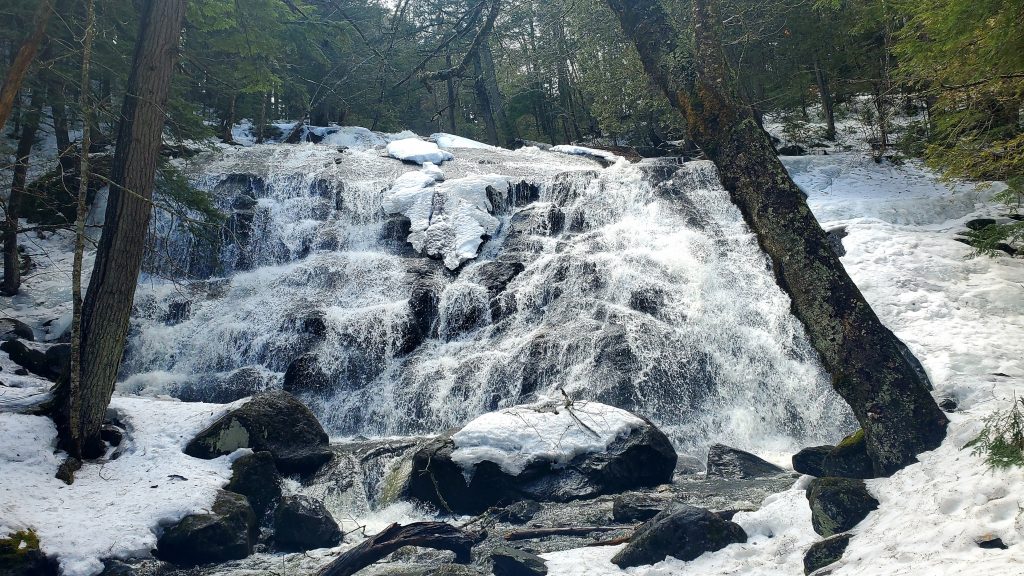
KINGFIELD — Franklin County is home to many of Maine’s highest peaks and boasts an extensive hiking trail network. As the snow melts off, residents and guests alike are preparing for the summer hiking season.
Hiking in spring is a fantastic experience. The world is coming alive: hidden in the woods beside the trails are the first spring flowers and fiddleheads. Trees are starting to leaf out and a soft green mist covers the slopes of the mountains.
But hiking in the spring presents some unique challenges that must be taken into account.
The temperature and weather conditions vary by elevation and across the state. Southern Maine may feel like spring has fully settled in, but at Saddleback Mountain, a snowmobile event is planned for the end of April. At higher elevations, there’s still plenty of snow and ice, creating trail hazards that must be anticipated.
Dress for the weather. ‘Cotton kills’ is the saying, and the reason for this is because cotton holds moisture and loses some of the insulating properties. Wool and synthetics don’t have the same problem, so they are typically recommended for hikes, especially in cold, wet weather.
Rather than dressing up in bulky clothes, aim for several layers of lighter material. Layers allow you to regulate temperature by adding or removing items without exposing skin, and provide better insulation by trapping air in between the clothes.
Complete the outfit with hiking boots with good ankle support to protect your ankles against rolls and sprains. It’s best to avoid icy conditions, but pack a pair of ice grippers just in case.
It gets dark much earlier in the spring than in the summer, so plan for shorter hikes and pack a flashlight with working batteries.
Your pack should always contain the “Ten Essentials”. There should be items from each category. Generally, you won’t need most of these; it’s in case something goes wrong. In the backwoods and on the mountains, it can take some time for help to reach you in an emergency, so you should always have tools to stay safe and warm for an extended period of time. Depending on the length of the hike and how remote it is, you may have different needs, so use this list as a guideline and plan ahead.
The “Ten Essentials” list:
-Navigation
-Light
-Sun Protection
-First Aid
-Knife
-Fire
-Shelter
-Extra Food
-Extra Water
-Extra Clothes
Roads and trails may be impassable due to mud, snow, ice, or a combination. Have a plan, and stick to the places you know. Summer is a better time to explore new or intense hikes.
Be prepared for little to no cellphone signal. Know your route without the aid of your cellphone. As with all outdoor recreation, make sure you communicate your plans with someone in advance: where you’re going, what you’re doing, and when you plan to return. If something does happen, this information can be critical for rescue personnel.
For any trip into the outdoors, planning ahead can keep you safe and allow you to fully enjoy the experience.




